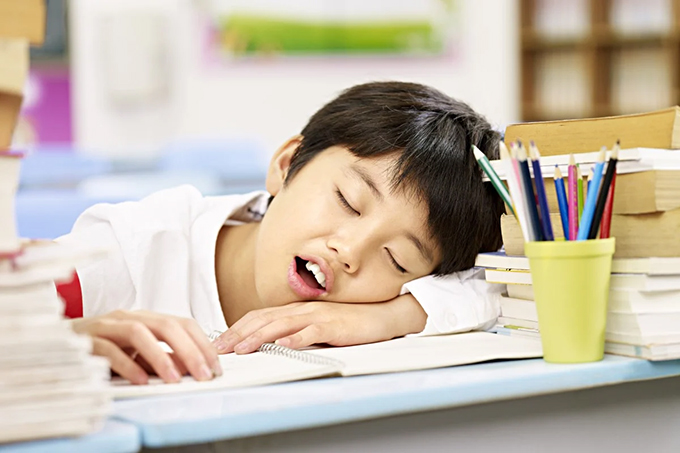
School has always been the greatest enemy of body movement. Its small classrooms, desks and static chairs, retain and attenuate the innate energy of boys and girls.
The few hours of Physical Education included in the educational curriculum seem to reflect a contempt of the political authorities towards this matter. A discipline that, despite its low weekly workload (from 1 to 3 hours per week, depending on the course and autonomous community), is the only one in the entire school program that has been able to scientifically demonstrate its benefits in different spheres of development human.
Benefits ranging from the improvement of learning of other curricular contents or improvement of academic performance , to improvements in psychological or psychosocial variables, values, health , and of course also in the motor plane .
Early childhood
Body movement becomes even more important in early childhood, in the stage from 0 to 6 years. And it is precisely at this stage where the educational curriculum most emphatically punishes children’s motor skills.
The latest studies carried out confirm that the vast majority of Early Childhood Education centers only teach 1 or 2 sessions of psychomotricity / Physical Education per week, which last about 50 minutes on average. Many times, the sessions are directed by people who are not experts in Physical Education and in inappropriate spaces, such as a corridor, a small interior patio, in the ordinary classroom moving the chairs and tables or small classrooms that limit the movement of the children.
These results confirm that the Spanish education system is not complying with the recommendations of the World Health Organization regarding physical activity levels of children in the stage of 0–6 years, an institution that advises 180 minutes of physical activity daily .
The stalking of sedentary lifestyle
Families don’t help either: numerous studies confirm the predominance of a sedentary lifestyle in most children.
All this points to the fact that we are witnessing the death of childhood: children deprived of bodily movement both in the school environment and in the extracurricular or family environment.
In contrast, research addressing the effects of physical activity in childhood highlights a wide range of benefits that are achieved when children move. All researchers conclude the need to establish strategies to encourage the practice of physical activity in childhood.
Impact on self-esteem and happiness
Among the benefits obtained are higher levels of self-esteem, self-confidence and self-concept, which in turn enhance multiple psychological variables, reduce stress and encourage children to face new challenges.
In Physical Education classes, children face challenges and participate in games and activities in which their body and mind are the true protagonists. When they overcome this challenge, or reach the objective established by the teacher, a trace of self-esteem remains in them that will help them face new challenges and continue doing physical activity. If children do not have that opportunity to move, and remain in the classroom sitting or on the sofa, it will be difficult for them to receive that injection of self-esteem.
They also experience a greater sense of happiness thanks to the different neurotransmitters that are activated with the practice of physical activity. The movement, in addition to the release of energy, provides a feeling of well-being, happiness, pleasure, enjoyment and tranquility.
Improvements in human capital
We also found improvements in the human capital of the students: multiple key values are promoted to improve future coexistence in adult society, such as group cohesion, effort, resilience, knowing how to lose and win, respect and tolerance.
In addition, it contributes to improvements in the social sphere, because children, while playing in Physical Education class, abide by and establish rules and regulations. All of them have a great transfer in the adult world. They learn to collaborate and cooperate with other children and generate empathy and affective bonds.
Physical benefits
The motor plane is the most benefited and, along with it, also growth, maturation and motor learning. Physical exercise promotes bone and muscle development.
It also influences multiple variables linked to psychomotricity, such as balance, tonic control, laterality, fine and gross praxia, hand-eye coordination, foot coordination and general dynamics…
As an example: laterality and fine praxis will favor the learning of writing.
Other improvements are perceived in strength or speed, as they give the child a better physical condition and better motor skills.
Establish habits for life
Scientific research on physical activity in early childhood also indicates that children who engage in physical activity at this stage tend to have healthy future life trajectories. Sports absenteeism in adolescence is reduced , a stage where the practice of physical exercise is most abandoned. It also acquires a normal weight profile and improves health and well-being.
In short, betting on an hour of daily Physical Education at school from early childhood is to improve the health of the child-juvenile population, reduce pathologies and pharmacology in childhood and adolescence, reduce sedentary lifestyle, reduce health costs and bet for a healthier adult population.
Author Bio: Victor Arufe Giraldez is Professor Faculty of Education. Director of the School Sports, Physical Education and Psychomotricity Research Unit at the Universidade da Coruña
